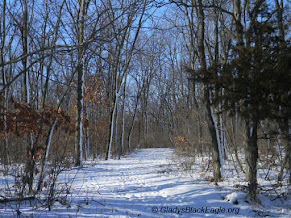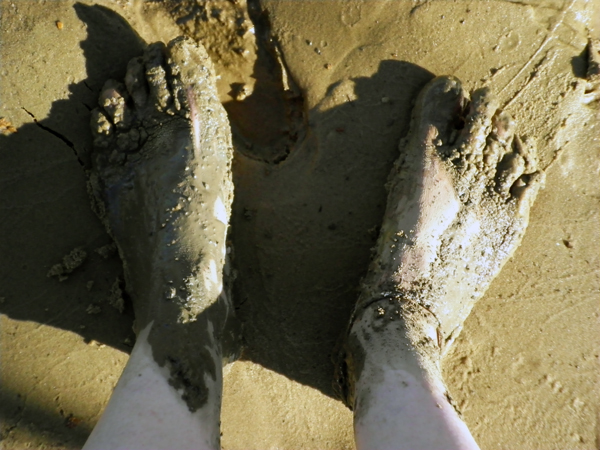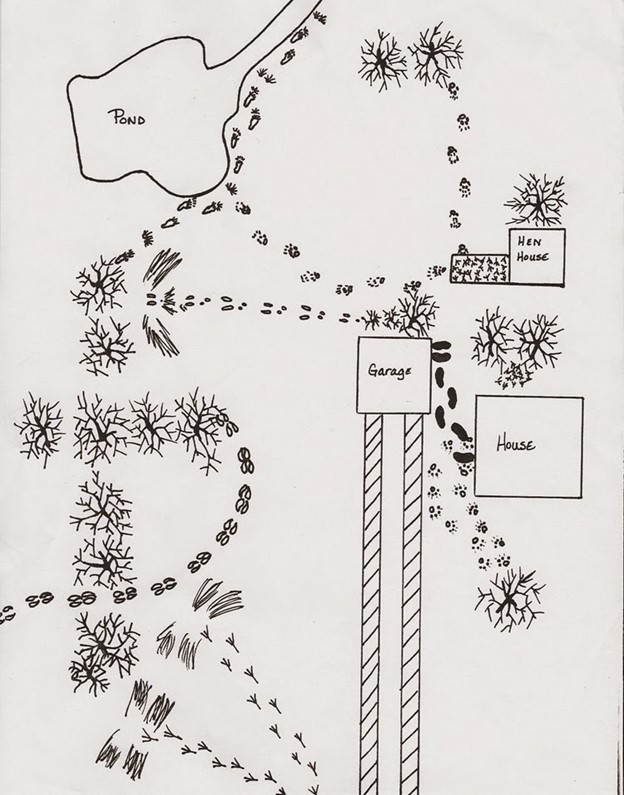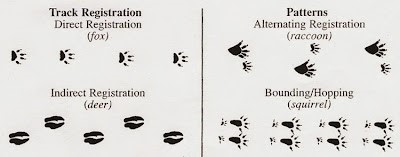Who Goes There? Unraveling a Mystery!!
Marla Mertz, Marion County Conservation

Here we are in another Iowa winter. The ups and downs of Iowa’s weather can easily go from one extreme to the other, from cold to frigid, from rainy to snowy to foggy, and sometimes muddy. Animals are still out and about and we can tell what they have been doing if we know the clues left behind.
Let’s take five minutes and go on a winter walk to our backyard, down the sidewalk, or to a trail and see if we can “read” a story along the way. Yes, read a story. It is a mystery.
Tracks and signs in the snow and mud help us to unravel the mystery of what types of animals live around us, what kind of habitat they live in, what kind of food they eat, and where they go when they are out and about exploring. Find some tracks and follow them. Where do they begin? Where do they stop? Did they stop for a drink? Did the animal climb a tree? Was the animal running or walking? Did they walk a straight line or meander about?

Locating animal sign around us gives us a clue to an animal’s life, where they live and what they eat. Can you find other ‘sign’ along the way that tells you there was something close by?
Look at the drawing below. Can you write or tell your story of what the animals did that day?

Here are some basics steps to animal tracking if you want to learn just a little bit more.
When examining tracks, look at one individual track, then look at the pattern that several tracks make. Take a look at your surroundings and note the habitat that you are in or closest to that will provide clues as to what kind of animals would most likely be there.
In looking at an individual track, note the general shape and determine if there is a heel pad. If so, what does it look like and how is it placed on the foot. Are there any toes? If so, count them and determine whether they are all the same. Do you see other marks or sign that the animal made like toes dragging (this is easier to see in fresh snow) or tails dragging, what about wing marks from a bird as it took off from the ground?
Scroll through the "Tracks" photos in Google Photos to see what animal tracks look like in snow or mud!

After examining one track and any additional signs or clues, look at the group of tracks to see if you notice a pattern of movement or which way it is traveling. Trackers use terms such as “alternating” and “registering” to describe where a single track falls in sequence.
Direct registration is where an animal’s front foot is placed carefully. For example, a fox stalking its prey silently. They place their front foot so carefully that they do not want to crinkle a leaf or make any sound. The hind feet fall into the same place that their front foot did, which assures that it will be the same quiet placement. Each track is a “register.”
Indirect registration is when the hind foot registers just outside the front track.
The pattern of the tracks is also noteworthy. The alternating pattern is where an animal’s hind and front tracks will alternate, such as the raccoon.
Bounding and hopping describes a complete set of four tracks. Rabbits and squirrels often bound or hop from place to place.
A continuous line of tracks are left by walking animals such as opossum and raccoons.

If you happen to feed the birds in your yard, or look at the edges of roads in the snow, you may notice their foot tracks and wing markings.
Some animals have long tails that drag. A wavy line between the tracks could be a sign of an opossum or mouse leaving their tail marks between their footprints.
Now it's your turn! Draw a 'track story.' Ask someone else to create a story based on your picture of animal sign!
Download these PDF files to help with your track story or your next tracking adventure!
- Common Iowa Wildlife Tracks from the Iowa Department of Natural Resources
- Comparison sheet of bobcat, mountain lion, and domestic dog Iowa DNR
Activities plus Tracks and Tracking
- Learn how to make plaster casts of tracks you find!
- National Wildlife Federation
- Wisconsin DNR EEK! is an electronic magazine for kids in grades 4-8
- Missouri Department of Conservation - Tips for Mammal Tracks
Books and Guides:
- Nature Smart: A Family Guide to Nature, by Stan Tekiela and Karen Shanberg
- Tracking and the Art of Seeing, How to Read Animal Tracks and Sign, by Paul Rezendes
- The Wild Mammals of Missouri,by Charles and Elizabeth Schwartz
- The Encyclopedia of Tracks and Scats (A comprehensive guide to the trackable animals of the United States and Canada), by Len McDougall
- Tracks, Scats & Signs, A Take-Along Guide, by Leslie Dendy
Iowa Association of Naturalists - Iowa Mammals
published Saturday, January 1, 2022



